|
Repairing
Model M
Re-use a key base
assembly
P/N
42H1492
( Later model)
|
Got a junk Model M P/N 42H1492 made in
1996.
Condition; Very poor, full of dust and mud hardened with rain.
One
of my net friend found it at a junk yard but he didn't pick it up because it
was so dirty and had been there for several rainy days. I asked him to pick it up and sent it to me for parts.
I thought it might be a good source for a space bar, shift keys, and so
on.
Examined the junk 42H1492 and I noticed that a control PCB could not be
used for my earlier type of Model M such as 1391401. Well, all the
keys were there, it was just dirty, with plenty of mud, rusty inner steel
plate... but it could be refurbished.
|
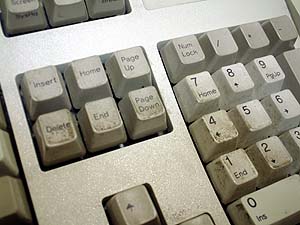
|
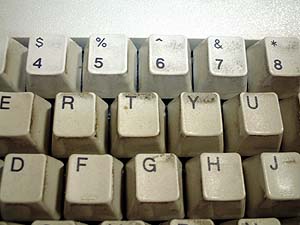
|
|
Mud caked key tops. |
|
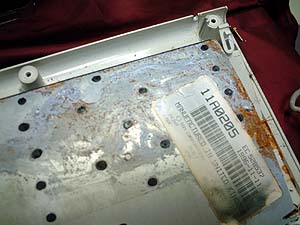
|
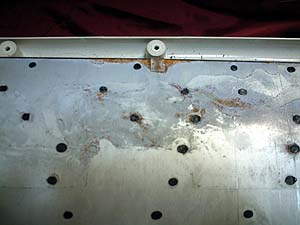
|
|
Rust began to eat the inner
steel plate. Round, black parts are melted studs which stand
from upper actuator panel . Melted studs keeps actuator panel pressing
firmly to the bottom steel plate. You may see some ( three or four
or more... ) of melted heads when you disassemble outer cabinets of model
M. These melted rivets are one of weakest part of model
M. If a model M looses so many melted heads then it
also looses firm tactile feedbacks when we type because both plates may
not keep tight connection. |
|
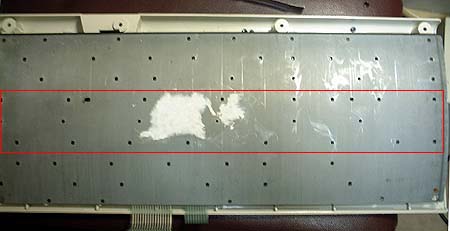
|
|
All the melted
plastic studs were cut off so that the steel plate can be removed
from the upper actuator panel.
Above picture is the one from model 1391401 which the melted
studs were all pulled out.
It is recommended to use bolts and nuts for the holes within
red square line. Especially the middle of three rows
requires much force to connect the actuator panel to the steel
base plate. For the other holes you may use tapping
screws without nuts.
For front 2 rows, you need to use conic head bolts in order to
avoid heads of bolts meddling with a base cabinet.
|
Recommendation about
bolts
I used;
#1. 2mm x 8mm bolts plus nuts
#2. 2mm x 8mm bolts with a conic head
If you can prepare 2.6mm x 8mm tapping screws
with a conic head, it's much better.
#3. 2.6mm x 6mm tapping screws.
|
|
|
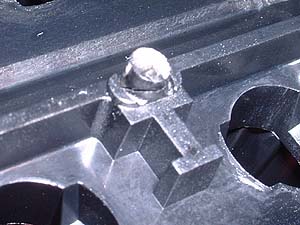
|
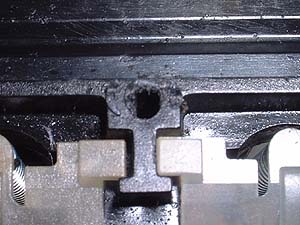 |
|
Before drilling a hole .
Need to cut every studs from the base. |
After drilling a hole |
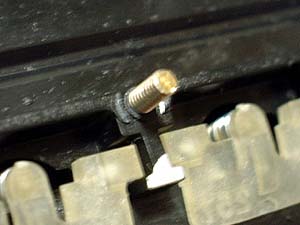 |
Set some screws so that you can
place a rubber sheet and membrane sheets at the right position using
the screws as studs to guide sheets. |
|
|
|
Set every buckling units
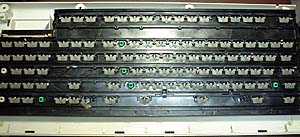
|
Cover the plate with a rubber sheet.
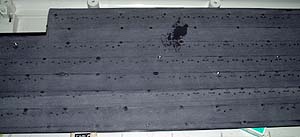 |
|
Then Place membrane sheets one by one. |
|
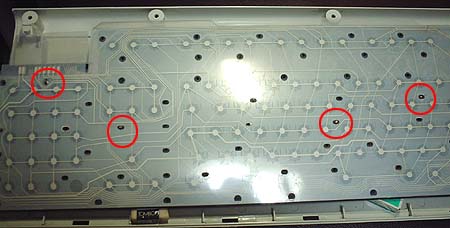 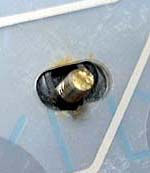
|
|
Red circles in the picture are
screws as "studs" . Without these studs it may be difficult
to set membrane sheets properly. |
|
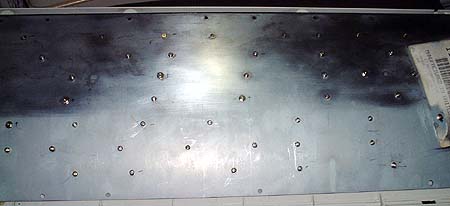
|
|
Finished !
I did not use bolts for the most front row. Plastic studs are
still there. I can't get conic head tapping screws and I
did not think this row should be connected firmly with
screws.
Followers are recommended to use conic head
tapping screws for the front row too.
|
|
|
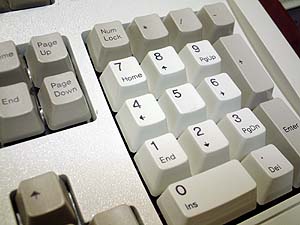
|
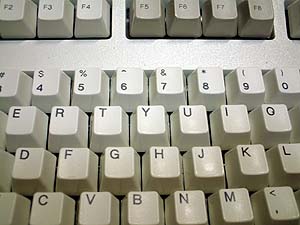
|
|
No magic. Just washed every key
tops and front/base cabinets . |
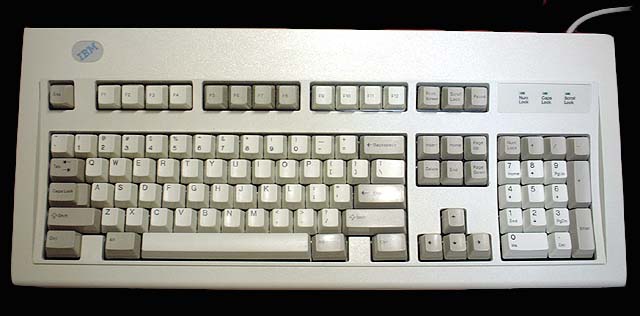 |
|
I bet you will like the touch and feel of buckling
action of every keys after you successfully finished repairing your
Model M using bolts and nuts. It will give firm response and
you may not hear loose resonance of coil springs anymore.
Try bolts and nuts,
If your Model M lost many melted head of plastic studs and if you want a
superior Model M.
That's the way you may like
2004.07.19 By Sandy |
|
